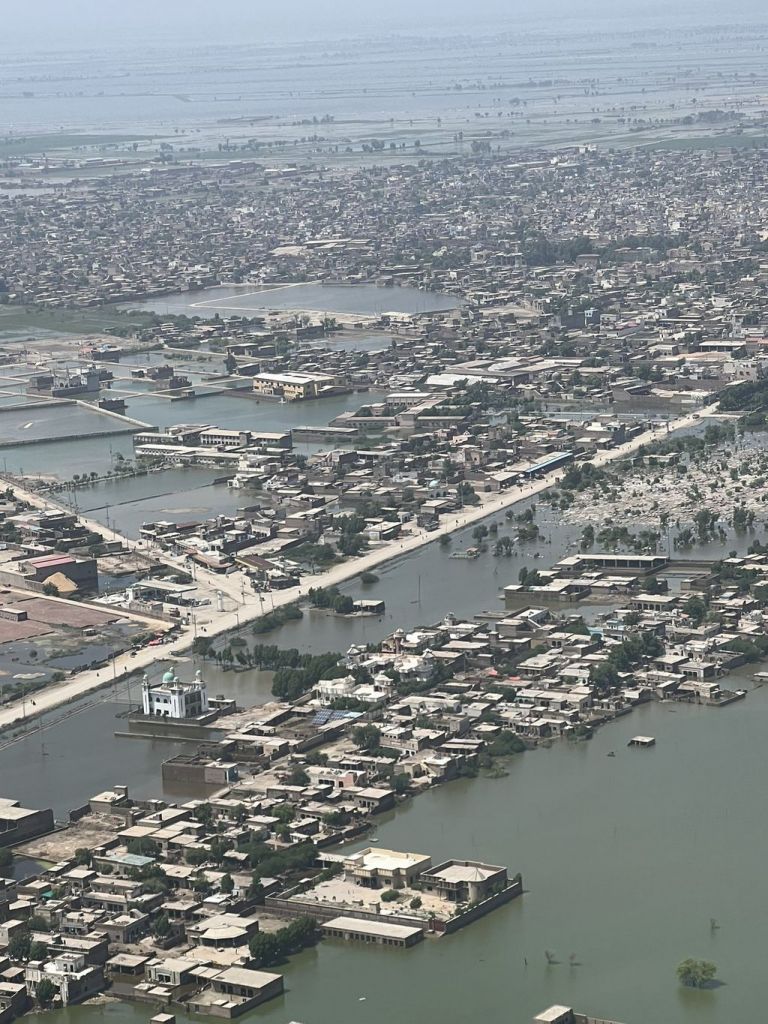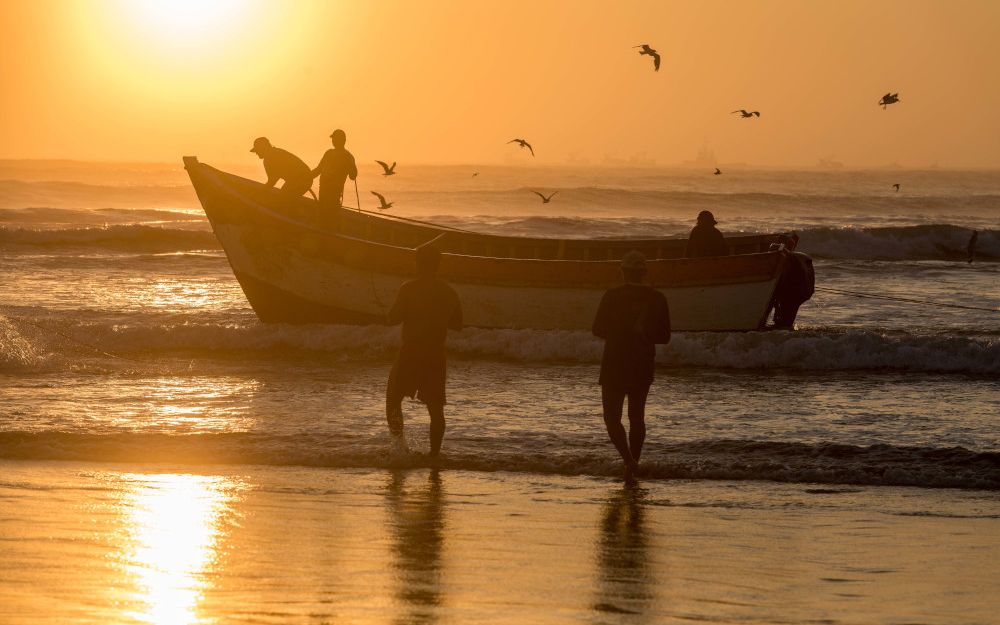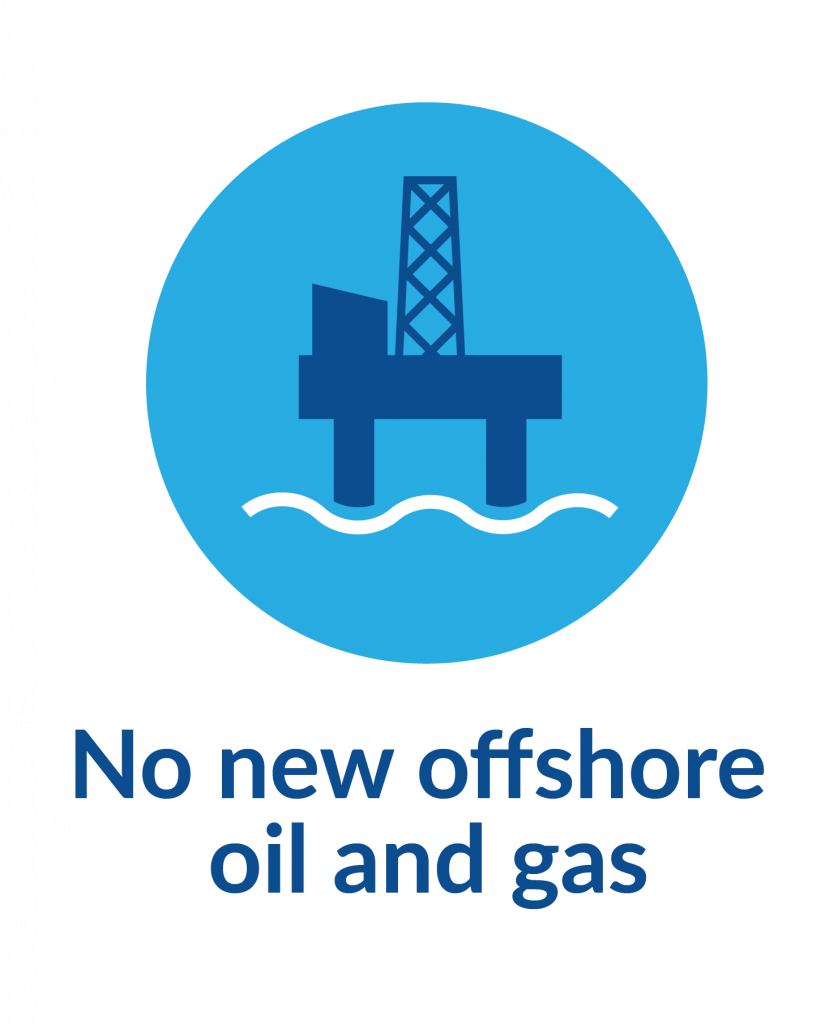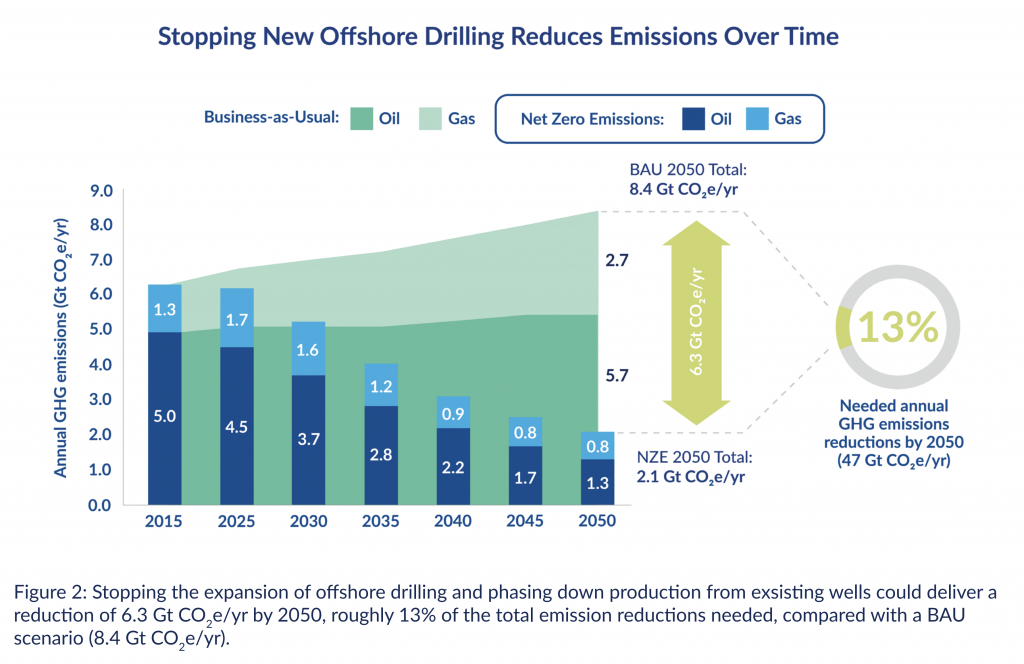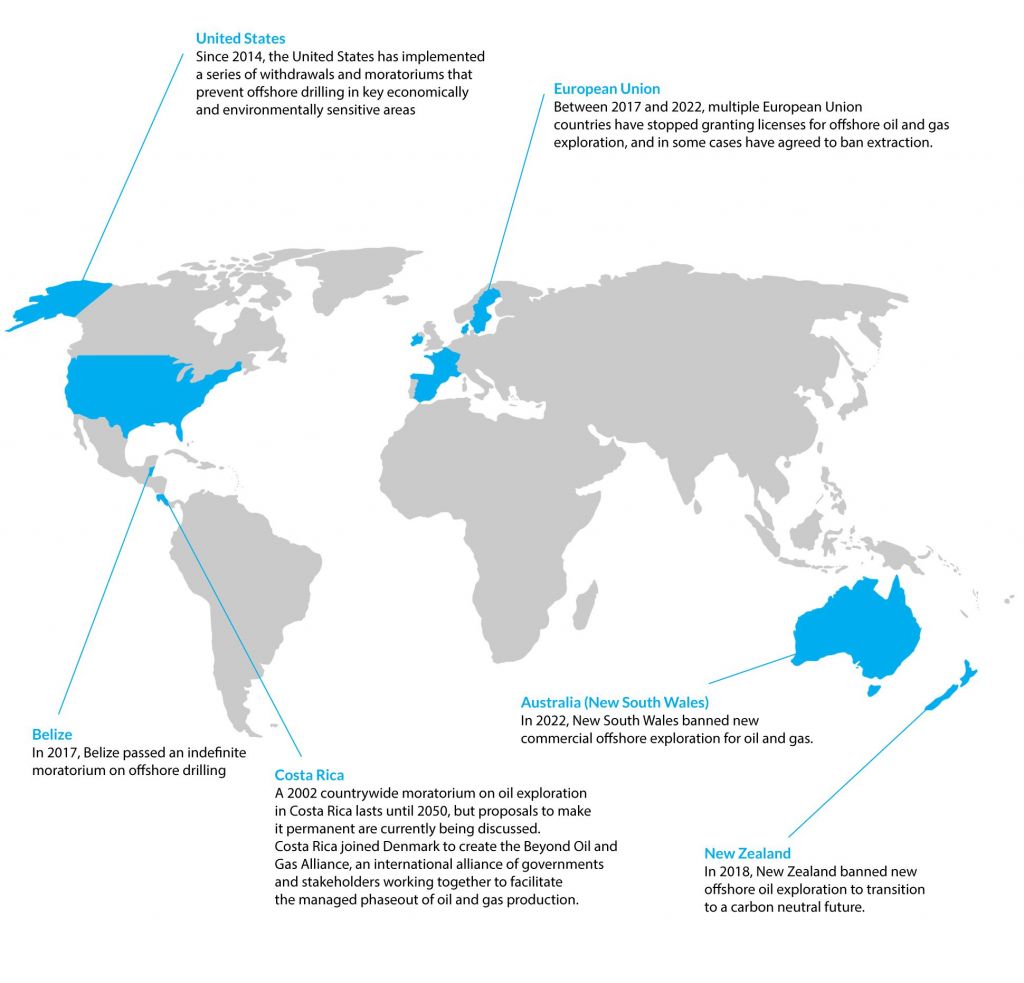
Ocean Solutions Are Climate Solutions
Photo credit: Virgil Cayasa via Unsplash
Analysis Finds Stopping the Expansion of Offshore Drilling Can Help Prevent the Worst Impacts of the Climate Crisis
A report published in November 2022 by Oceana, a nonprofit ocean conservation organization, found that stopping the expansion of offshore drilling can help prevent the worst impacts of the climate crisis. This analysis determined that halting new offshore oil and gas drilling, and phasing down existing production, can add up to nearly 13% of the emission reductions needed to keep global warming below 2 degrees Celsius (°C) and prevent the most severe impacts of the climate crisis.
Dr. Kathryn Matthews, Chief Scientist at Oceana, emphasized the report’s key findings:
“If we stop the expansion of offshore oil drilling, this will help keep the planet from warming to catastrophic levels.”
Dr. Matthews explained, “More specifically, if we stop the expansion of offshore oil and gas drilling, that delivers about 13% of the total reductions needed in greenhouse gas emissions to stay under that two-degree Celsius threshold that you hear talked about. That is really the sort of catastrophic warming levels we’re all trying to avoid.”
WHAT ARE THE WORST IMPACTS OF CLIMATE CHANGE?
By the early 2030s the world is expected to surpass its goal of limiting warming to 1.5°C above preindustrial temperatures, according to a 2023 study by the UN Intergovernmental Panel on Climate Change (IPCC).
Scientists warn that, once the world passes that threshold, climate disasters will become so severe that many people will struggle to adapt. By the end of the century, heat waves, severe weather events, famines, and infectious illnesses could cost millions of lives. In June of 2023, wildfire smoke from Canada engulfed many parts of the U.S., including New York City, choking out clean air and filling it with hazardous levels of toxic pollution – yet another weather disaster that will increase in frequency due to climate change. Fossil fuel use, as well as other unsustainable practices, have already caused the globe to warm 1.2°C above pre-industrial levels.
People from the Global South – which contributes the least to the climate crisis – are experiencing the most severe effects of climate change. For example, during the summer of 2022, around a third of Pakistan flooded. Devastating rains attributed to climate change displaced millions across the country. Yet Pakistan contributes less than 1% of the world’s greenhouse gases.
“You can attribute stronger droughts, storms … all of these sorts of things to climate change,” said Dr. Matthews.
“Petrochemical plants and climate impacts tend to disproportionately affect frontline communities, usually lower-income people. Toxic oil and gas infrastructure tends to be located in poorer areas in the U.S. Gulf Coast, with one notorious stretch of polluted land, dubbed ‘Cancer Alley,’ leading the United Nations to call for rectifications of the environmental racism that allowed people of color to be disproportionately impacted. Therefore, oil and gas development is also a justice issue — these communities have often been excluded from policy decision-making processes, while bearing the brunt of the harm.”
Beyond Expectations: Ocean Solutions to Prevent Climate Catastrophe, November 2022
“The other thing that people have done is actually start to calculate what’s going to happen in the world between only warming to 1.5 versus warming to 2°C,” said Dr. Matthews. For example, people experiencing food and water insecurity will face the largest decrease in ocean productivity in a hotter climate.
Dr. Matthews added, “Oceans are going to get hotter. They’re going to be able to hold less oxygen, which means the fish won’t be able to breathe and grow as well. And so, the actual ability of the ocean to create fish … will decline in the places where there are these large, vulnerable, fish-dependent communities.”
As the 1.5°C target looks increasingly difficult to achieve, the Oceana report highlights one of the key solutions that can help limit warming to 2°C by 2050. As the globe warms, the potential for hazards increases, so every fraction of a degree matters in preventing these effects. This report proposes a new ocean-based solution to work in tandem with five existing ocean-based solutions.
WHAT ARE THESE FIVE EXISTING OCEAN-BASED SOLUTIONS?

“More than 90% of the excess heat trapped in the Earth system due to human-caused global warming has been absorbed by the oceans.”
– NOAA Climate.gov
Photo credit: Matheo JBT via Unsplash
Without the oceans absorbing that heat, global average temperatures would have already soared by almost 100 degrees Fahrenheit, which would have made life on Earth impossible a long time ago. So, the oceans have provided an incredible service for us, but there’s a limit to how much they can absorb and withstand.
The climate crisis is affecting all of us through more frequent and intense wildfires, hurricanes, floods, droughts, and heat waves. The science proves that we must switch to clean, renewable energy sources this decade if we want to ensure a livable future. And that process can start in the oceans.
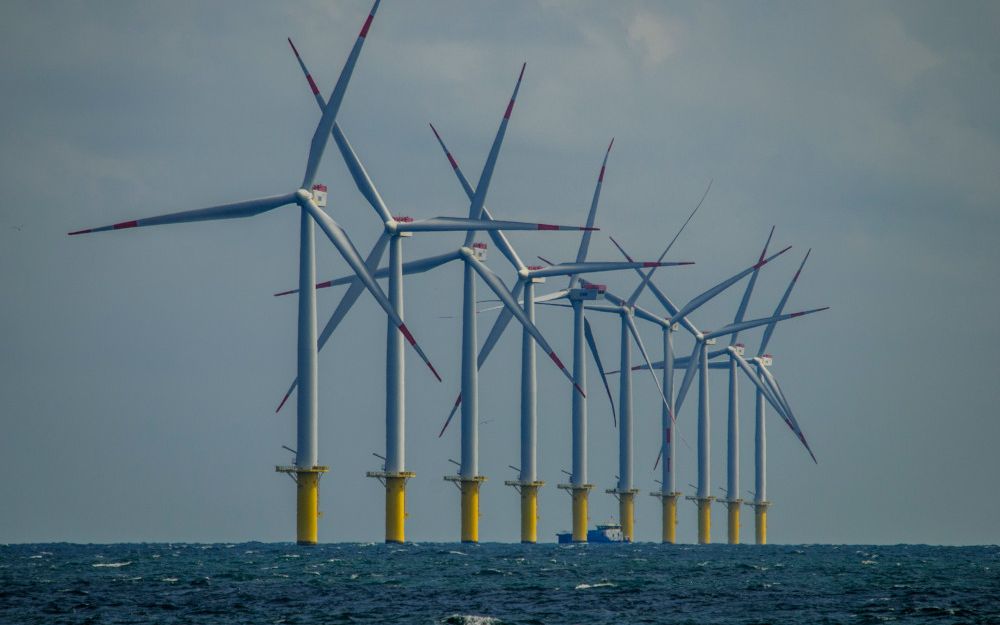
In 2019 The High Level Panel for a Sustainable Ocean Economy (HLP) released a report that highlighted five ocean-based solutions that can play a role in mitigating climate change. These solutions can also deliver 25% of the annual greenhouse gas (GHG) emission reductions needed to prevent devastating climate effects by 2050:

- Ocean-based renewable energy – This solution suggests replacing fossil fuel-based power production with renewable sources, including offshore wind, wave and tidal power.
- Ocean-based transport – This solution is based on improving shipping efficiency, shifting to batteries and lower/zero carbon fuels, and decreasing speeds of ships.
- Coastal and marine ecosystems – This solution relies on protecting and restoring coastal ecosystems like mangroves and seagrass beds, which account for nearly half of the global natural marine carbon storage.
- Fisheries, aquaculture, diet shifts – This solution entails an improvement in catch efficiency, decreasing fuel use in fishing, and incentivizing marine food sources as a climate-friendly alternative to more greenhouse gas-heavy land-based agriculture.
- Carbon storage in seabed – A possible solution would be injecting the carbon dioxide emitted from power plants directly into the seabed, along with other possible direct carbon storage methods. More research is needed before this could be considered a safe and viable net emission reduction solution.
AND THE SUGGESTED SIXTH SOLUTION:
- No new offshore oil and gas: This entails stopping the expansion of offshore oil and gas drilling, as well as phasing down production from existing wells. New development would be halted and any leases not currently in production would be restricted. This solution also includes accelerating clean and efficient energy policies to reduce offshore oil and gas demand and production over time.
“Stopping the expansion of offshore drilling has the potential to reduce emissions more than any other ocean-based solution.”
Dr. Kathryn Matthews, Chief Scientist at Oceana
Dr. Matthews continued, “It’s irrefutable that the climate crisis is here, now, affecting all of us through more frequent and intense hurricanes, floods, wildfires, droughts, and heat waves. This report makes it clear that ocean solutions are climate solutions. If we’re serious about preventing catastrophic climate change, our ocean is a great place to start.”
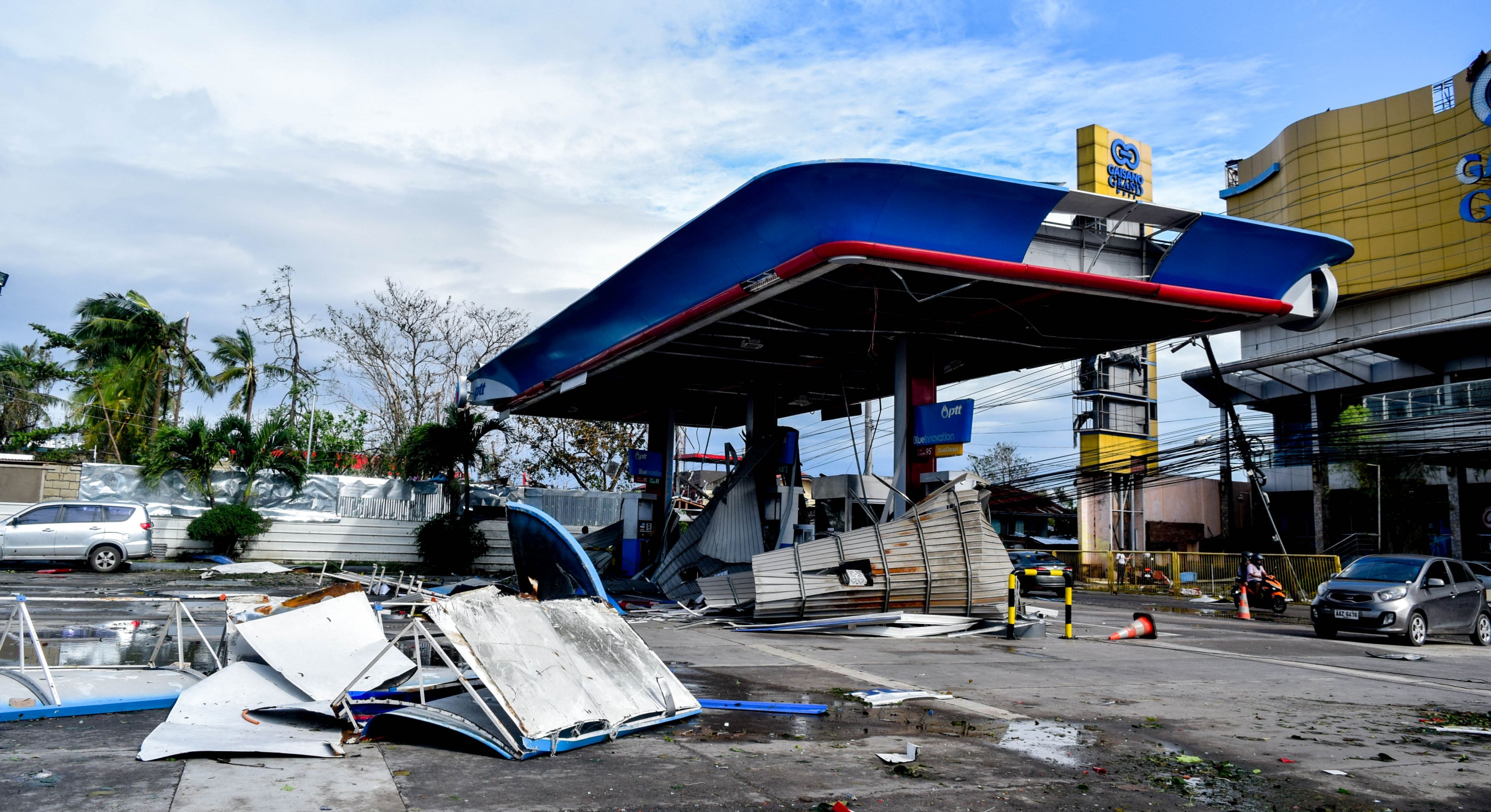
“Stopping the expansion of offshore oil and gas drilling along with other ocean-based solutions can contribute nearly 40% of the emission reductions needed to prevent the worst impacts of the climate crisis.”
– Beyond Expectations: Ocean Solutions to Prevent Climate Catastrophe
Photo credit: Carl Kho via Unsplash
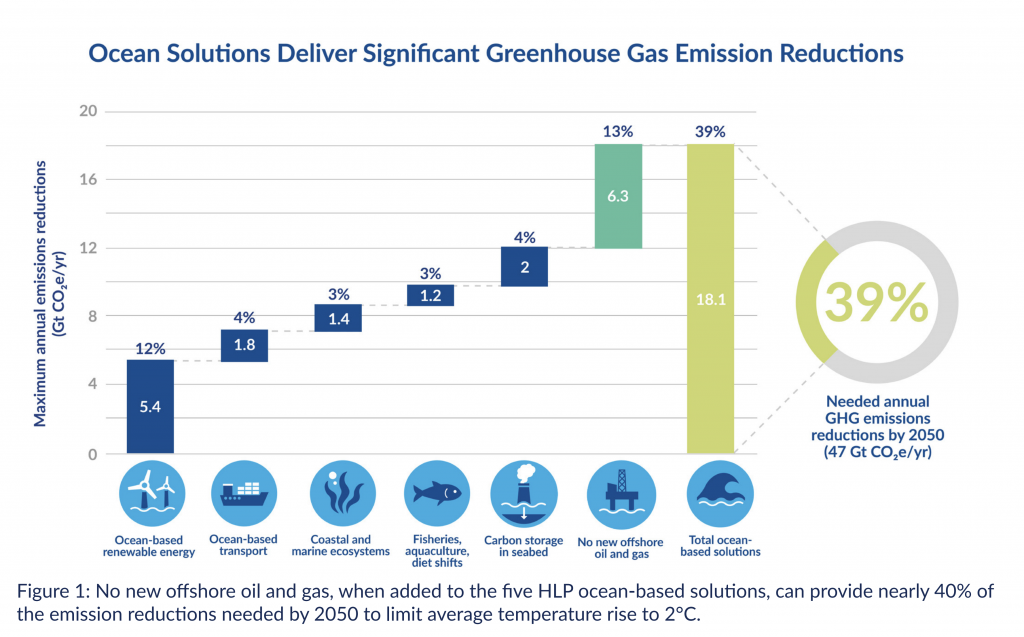
Stopping offshore drilling would deliver up to 13% of the annual greenhouse gas emission reductions needed to prevent the climate crisis’s worst effects. If this solution were to be implemented in tandem with the other five ocean-based solutions, the percentage would be brought up to almost 40%.
Dr. Matthews explained that the graph above compares a “business as usual” scenario to a “Net Zero Emissions (NZE)” scenario. The NZE scenario clearly illustrates that halting the expansion of offshore drilling and phasing down existing production are necessary in order for the global energy sector to achieve net‐zero CO2 emissions by 2050.
If the expansion of offshore drilling is stopped, and if clean energy policies push a phasedown of production levels worldwide, then the analysis finds that emissions could be reduced by 6.3 billion metric tons a year by 2050. That is the equivalent of the annual emissions saved by removing 1.4 billion cars from the road.
There’s another important takeaway from the report, according to Dr. Matthews:
“This is something that we can do now.”
Dr. Matthews explained that stopping offshore drilling is an ocean-based solution that doesn’t require new research or a need to gather more data. “We know we’re not going to stop all new offshore oil and gas drilling. You need to find lots of solutions. And those solutions are going to add up to more than the exact 47 gigatons of CO2 that you need to eliminate per year. We need to begin implementing those solutions – even if imperfectly – now.”
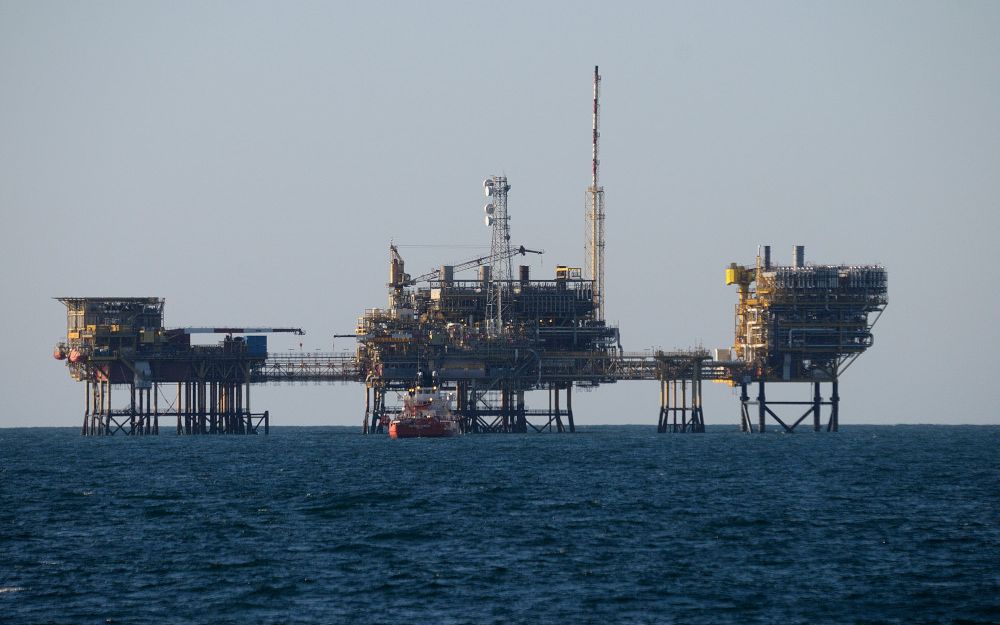

“By 2050, the emissions saved by stopping new offshore drilling and phasing down production is equivalent to taking 1.4 billion cars off the road.”
– Beyond Expectations: Ocean Solutions to Prevent Climate Catastrophe
Photo credit: Koushik Pal via Unsplash
Offshore drilling also poses the threat of another oil spill reminiscent of the Exxon Valdez and Deepwater Horizon disasters. According to Dr. Matthews, it will happen again: “It’s just a matter of time. Yes. There will be more disasters.”

The report recommends that the countries currently producing the most offshore oil and gas should not bring any new operations online and should allow production to phase down. Ten countries currently produce about 65% of all offshore oil and gas: Saudi Arabia, Norway, Qatar, Iran, Brazil, United States, Mexico, United Arab Emirates, United Kingdom, and Angola.
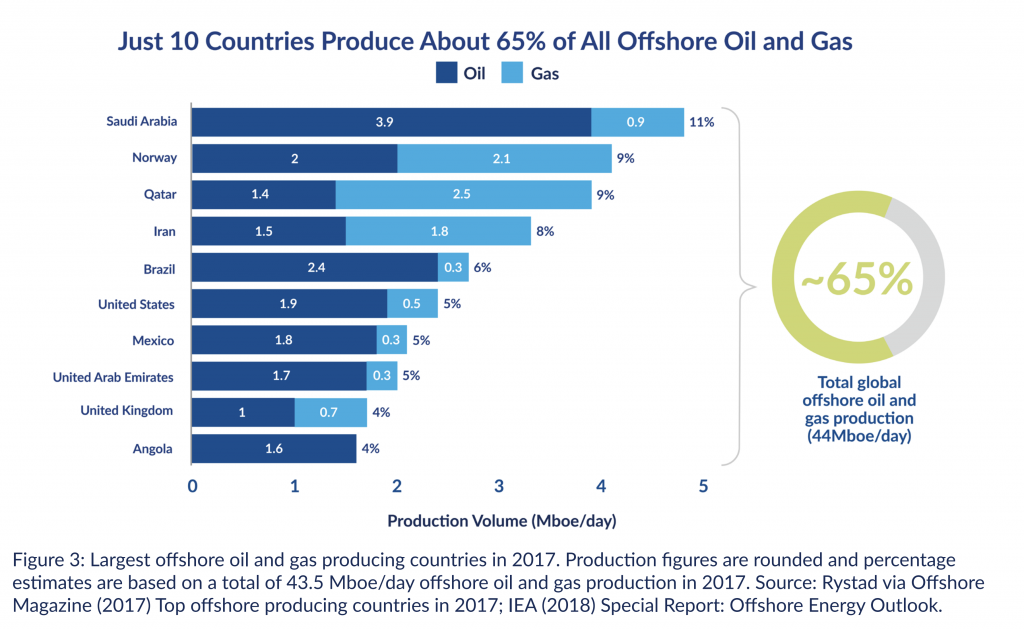
Some countries and regions are already taking steps to phase down offshore drilling. In other places, like the United States, more action is needed to end new leasing for offshore oil and gas drilling.
“I think stopping [drilling] before it starts is really important,” said Dr. Matthews, who explained that, while the climate crisis is a huge problem that is difficult to tackle, stopping new offshore drilling is “an example of a very clear, very straightforward way that we can make a pretty immediate contribution now to the future of our energy system.”
“How many catastrophic events do people have to experience that are climate-related before they actually start to think they need to do something about it?”
Dr. Kathryn Matthews, Chief Scientist at Oceana
Dr. Matthews suggested people can get involved by calling their congressional representative and asking them to support a permanent ban on new leasing for all offshore drilling: “There are tools inside the executive branch and the legislative branch that we can still use. And those are things that are in our power now.”
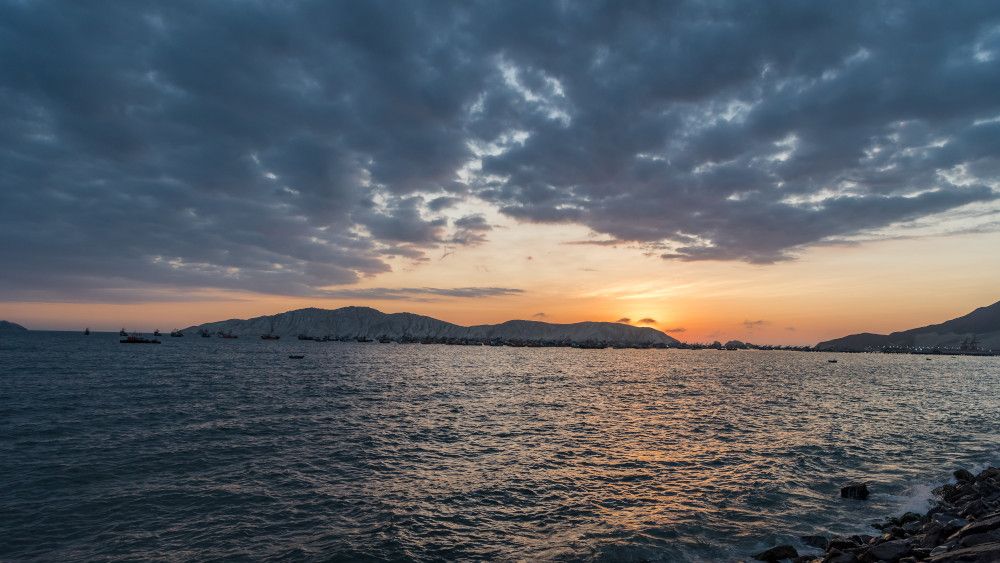
ADDITIONAL RESOURCES:
FROM OCEANA:
A Simple Solution: How President Biden Can Meet Offshore Clean Energy Goals and Prevent New Offshore Drilling (April 2023)
Beyond Expectations: Ocean Solutions to Prevent Climate Catastrophe (November 2022)
Where they drill, they spill: Offshore drilling is dirty, dangerous, and drives climate change (May 2022)
Offshore Drilling Fuels the Climate Crisis and Threatens the Economy (January 2021)
FROM PERIL & PROMISE:
The Power of Big Oil | A FRONTLINE Docuseries
The Power of Big Oil from FRONTLINE examines the fossil fuel industry’s history of casting doubt and delaying action on climate change. This three-part series, supported by Peril and Promise, traces decades of missed opportunities and the ongoing attempts to hold Big Oil to account.
Facing Down the Fossils is a four-part documentary series about the people who are dealing with generational consequences of the pollution and economic damage caused by the fossil fuel industry and who now face the prospect of even more fossil fuel projects in the United States. This series is a co-production of Nexus Media News and Peril and Promise, a public media initiative from The WNET Group.
The Dazzling Ocean Reefs Hidden Beneath Offshore Oil Rigs
Is the Seagrass Always Greener? A Climate Guide to Seagrass
The 1989 Exxon Valdez oil spill, how we see climate change then and now
This multimedia essay was created by Peril and Promise in partnership with Oceana.
Peril and Promise is a public media initiative from The WNET Group, reporting on the human stories of climate change and its solutions. Major funding for Peril and Promise is provided by Dr. P. Roy Vagelos and Diana T. Vagelos with additional funding from Sue and Edgar Wachenheim III, and the Estate of Worthington Mayo-Smith.
Oceana is the largest international advocacy organization dedicated solely to ocean conservation. Oceana is rebuilding abundant and biodiverse oceans by winning science-based policies in countries that control one-quarter of the world’s wild fish catch. With more than 275 victories that stop overfishing, habitat destruction, oil and plastic pollution, and the killing of threatened species like turtles, whales, and sharks, Oceana’s campaigns are delivering results. A restored ocean means that 1 billion people can enjoy a healthy seafood meal, every day, forever. Together, we can save the oceans and help feed the world. Visit Oceana.org to learn more.

